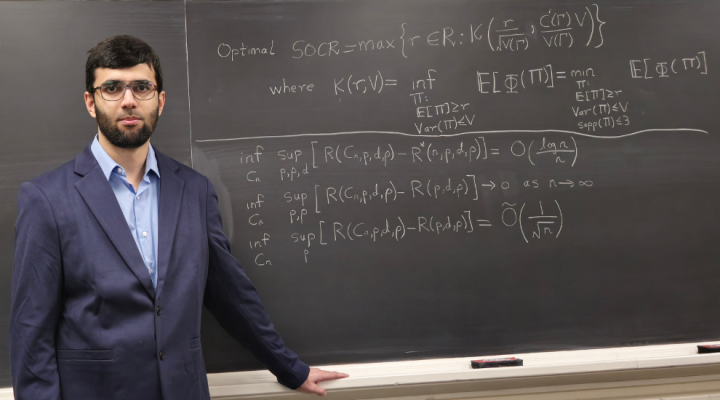Open up your cell phone and look at the board inside, and you’ll find several chips. For every frequency band your cell phone runs—Wi-Fi, Bluetooth, 4GLTE, 4GSM--it uses a different chip. Hazal Yüksel, a fifth-year Ph.D. student, is working with Professors Al Molnar and Alyssa Apsel to create a chip that aggregates all of this functionality onto a single chip, making it smaller and cheaper, and potentially creating a paradigm shift in wireless communications.
“It’s called a duplexer, a particular kind of transceiver that can transmit and receive at the same time, and over a huge range of frequencies,” Yüksel says. “That’s a technically challenging problem.”
Currently, when a company like Verizon or AT&T purchases a frequency band, they then build chips that operate only on these particular frequencies. Creating a chip that can not only work on multiple frequencies, but can also access different frequencies at the same time, opens up a lot of space. You can use this new chip for different purposes—you have something that works for nearly everything.
“It opens up a lot of doors,” says Yüksel. “Right now you are stuck with a cell phone carrier, you’re stuck with your options. This would make things much more flexible. I can definitely see in 5-10 years this becoming a viable alternative, because people are going to need more and more data, especially with so many people using Netflix on their phones, for example.”
Yüksel started her undergraduate education at Duke University as a biomedical engineer, but electrical and computer engineering drew her it. “I then did this weird combination of math and electrical engineering, which was nice, because in EE there were a lot of things I could use a lot of math for and a lot of theory for, and that interested me. And the hands on part of ECE really drew me in.”
In the Molnar group, Yüksel and her cohorts work from the bottom to the top. They come up with the idea, do some simulations to see if it’s technically sound, then build it, fabricate it, design test structures and test it, and then if necessary create algorithms to make it operate and do the theory for the particular thing they designed. “The exciting thing about this is being able to see the entire development process, to see how some of the choices I make in one place relate to another place,” says Yüksel. “It’s also very rewarding to see the entire process and have something in your hand that actually works.”
An innately curious person, Yüksel finds inspiration in the environment of Cornell and ECE. “I can constantly be curious about things and constantly be figuring them out,” she says. “And what’s nice about Cornell is that all of the things I’m curious about, someone here is an expert.”
She particularly likes Cornell’s motto, ‘I would found an institution where any person can find instruction in any study.’ “I never really understood it, or how it related to me, until I took a wines class at the Hotel School. It’s really amazing to me that just across the street from Phillips Hall, there are people getting an education in something completely different. The fact that we can co-exist in the same place is so interesting to me. I get to learn all of these incredible things from people in such different areas and it’s so accessible.”
Outside of her work in ECE, Yüksel has also taken classes on weightlifting, Jujitsu and boxing during her time at Cornell, and does MMA (mixed martial arts) in her spare time. A self-professed obsessive cook, she occasionally throws dinner parties for her fellow grad students.
“I’m here for myself,” she says. “I enjoy the process of learning and figuring things out. I’m not here so that someone someday can call me Professor, or to make a lot of money, or for people to think I’m cool for doing what I do. I just enjoy what I do. That’s enough for me.”



